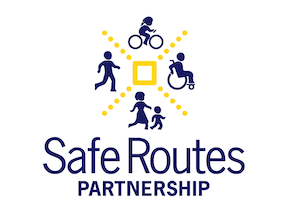Resource Library
This study compares the associations between weight status and different forms of physical activity among adolescents.
This study examines the relationship between traffic-related air pollution, air quality, and autism.
This study aimed to identify environmental determinants of the uptake of cycling after relocation.
This chart details each state’s progress on implementing the federal Safe Routes to School program. All dollar figures cited are as of June 30, 2012
This study was designed to examine whether residents living in neighborhoods that are less conducive to walking or other physical activities are more likely to develop diabetes and, if so, whether recent immigrants are particularly susceptible to such effects.
The purpose of this study was to report pilot findings on the extent to which the Ready for Recess intervention was associated with a different amount of increase in moderate to vigorous PA (MPVA) during recess and the rest of the school day between girls and boys, and between nonwhites and whites.
Previous studies have been inconclusive concerning the effect of active transport on BMI. This study investigates the association between travel mode and BMI in a large community-based sample of Danish adolescents.
A video explaining The Oklahoma Shared Use Project--a collaboration of the Oklahoma Fit Kids Coalition and the American Heart Association.
There are many ways to fund community and state-wide Safe Routes to School programs.
This study investigated whether change in travel mode to/from school was associated with change in physical activity among young people transitioning from primary to secondary school.
The Safe Routes Partnership produced this air quality resource guide with Consulting for Health, Air, Nature, & a Greener Environment, LLC (CHANGE).
This draft policy provides guidance on community use of school district facilities and grounds in Seattle Public Schools.
KEY TAKEAWAY:
Higher BMI and fat mass were connected with lower academic achievement scores.
Including measures of distance and time can improve risk comparisons of travel modes and may show that bicycling is not as hazardous as commonly thought.
KEY TAKEAWAY:
- Schools can promote daily physical activity, which has benefits for health and academic success.
A school-community kitchen presents a new kind of social contract: a public school kitchen, used by both the school and the community as a resource for educational, vocational, and production purposes.
Learn about engaging policymakers in Safe Routes to School.
A toolkit for planning site visits and member meetings to build congressional champions for Safe Routes to School.
Participants learn the ins and outs of the 2012 transportation law, MAP-21.
This toolkit shares what we have learned from successful agreements, offering guidelines and templates for other communities looking to expand their access to school recreational facilities.

